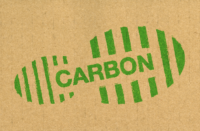ACI 212.4R-04, Guide for the Use of High-Range Water-Reducing Admixtures (Superplasticizers) in Concrete, contains information on high-range waterreducing admixtures, which can increase the strength of concrete and provide greatly increased workability without adding more water. This guide offers information on the effects of these admixtures on the properties of fresh and hardened concrete, the uses of concrete, and the quality control of the concrete. The guide is designed for concrete suppliers, contractors, designers, specifiers, and all others engaged in concrete construction. ACI 440.3R-04, Guide to Test Methods for Fiber-Reinforced Polymers (FRPs) for Reinforcing or Strengthening Concrete Structures, provides model test methods for the short- and long-term mechanical, thermo-mechanical, and durability testing of Fiber-Reinforced Polymer (FRP) bars and laminates. These unique test methods acknowledge the differences in the physical and mechanical behavior of FRP materials compared to steel, and are based on the knowledge gained from research results and literature worldwide, including a fiber-reinforcing publication from the Japan Society of Civil Engineers, which has been adapted to test methods in the USA. ACI 524R-04, Guide to Portland Cement-Based Plaster provides specific information on the plastering process, including prequalification of materials, requirements for tools and equipment, mixture proportions, application procedures, types of finishes, and troubleshooting and repair. This guide is intended for use by architects, engineers, designers, specification writers, contractors, plasterers, laboratory personnel, and public authorities for familiarization with the plastering processes and as an aid in specification writing. ACI 212.3R-04, Chemical Admixtures for Concrete, highlights a variety of widely used chemical admixtures together with information, purpose, and expected effects of using each. Also discussed are the increased efficiency and improved economy that are typically realized when using chemical admixtures. Specific admixtures studied in this publication include: air-entraining, accelerating, water-reducing, set-controlling, gasforming, grouting, bonding, corrosioninhibiting, freeze-resistant, and admixtures for flowing concrete. For more information, call (248) 848-3800 or visit www.concrete.org.












